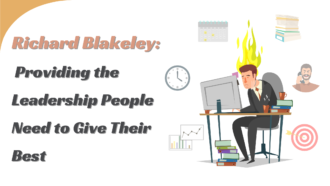10 Ways to Improve Requirements Gathering for Project Management
- 1 10 Strategies to Enhance Requirements Collection in Project Management
- 1.1 1. Engage All Relevant Stakeholders Early On
- 1.2 2. Utilize a Variety of Elicitation Techniques
- 1.3 3. Implement a Clear Process for Documenting Requirements
- 1.4 4. Prioritize Requirements
- 1.5 5. Encourage Open Communication and Collaboration
- 1.6 6. Validate and Verify Requirements
- 1.7 7. Use Visual Aids
- 1.8 8. Implement a Change Management Process
- 1.9 9. Provide Training and Support
- 1.10 10. Continuously Improve the Process
- 2 Conclusion
Successful requirements gathering ensures that project managers have a successful project.
There are many techniques for effectively gathering business requirements. Why is this important? This ensures project success at each stage of the project lifecycle, saving time and money Failed IT projects are expensive, and billions are wasted on failed projects every year!
Managing requirements gathering is a critical phase in project management, laying the foundation for what needs to be accomplished. A clear, thorough, and well-understood set of requirements paves the way for project success, ensuring that the final deliverables meet the stakeholders’ needs and expectations.
This blog post will explore ten strategies to enhance your requirements-gathering process.
10 Strategies to Enhance Requirements Collection in Project Management
1. Engage All Relevant Stakeholders Early On
It is crucial to involve all key stakeholders from the outset. This includes the project sponsors, end-users, and those indirectly affected by the project. Early engagement facilitates a comprehensive understanding of needs and expectations, reducing the risk of overlooking critical requirements.
- Identify Stakeholders: List everyone interested in the project, including indirect stakeholders.
- Stakeholder Meetings: Schedule initial meetings to discuss their vision, expectations, and concerns.
- Continuous Engagement: Keep stakeholders involved through regular updates and feedback sessions.
2. Utilize a Variety of Elicitation Techniques
Don’t rely on a single method to gather requirements. Use elicitation techniques such as interviews, surveys, workshops, observation, and document analysis. Each technique can uncover different aspects of the requirements, and combining them provides a more complete picture.
- Interviews: Conduct one-on-one or group interviews to gather in-depth insights.
- Surveys and Questionnaires: Distribute these to collect quantitative and qualitative data from a larger audience.
- Workshops: Organize collaborative sessions to brainstorm and consolidate diverse viewpoints.
- Observation: Study end-users in their environment to understand their tasks and challenges.
- Document Analysis: Review existing documentation to identify current processes and requirements.
3. Implement a Clear Process for Documenting Requirements
Develop a standardized process for recording requirements. This should include templates and guidelines for documenting the information gathered effectively. Consistency in documentation ensures that requirements are clear, understandable, and easily accessible to all team members. Consider using a “requirements gathering template checklist” to streamline this process.
- Standardized Templates: Develop templates for consistent requirement documentation.
- Clear Guidelines: Provide guidelines on how to describe requirements, ensuring clarity and completeness.
- Version Control: Maintain a system for tracking changes and versions of requirement documents.
4. Prioritize Requirements
Not all requirements are created equal. Work with stakeholders to prioritize them based on business value, cost, time, and risk. This helps focus efforts on what’s most essential and make informed decisions when trade-offs are necessary.
- Criteria for Prioritization: Establish business value, urgency, and feasibility criteria.
- Ranking System: Use a ranking system (e.g., MoSCoW method) to classify requirements like Must have, Should have, Could have, and Won’t have.
- Stakeholder Consensus: Ensure prioritization reflects a consensus among key stakeholders.
5. Encourage Open Communication and Collaboration
Foster an environment where stakeholders feel comfortable sharing their thoughts and feedback. Encourage active participation and collaboration throughout the requirements-gathering process. This helps clarify ambiguities, resolve conflicts, and ensure a shared understanding of the project goals.
- Regular Meetings: Meet with the project team and stakeholders to discuss requirements.
- Collaboration Tools: Utilize collaboration tools to facilitate communication and document sharing.
- Feedback Loops: Establish mechanisms for stakeholders to provide ongoing feedback.
6. Validate and Verify Requirements
Regularly validate and verify the requirements with stakeholders to ensure they are accurate, complete, and feasible. This iterative process helps catch misunderstandings or errors early on, reducing the need for costly changes later in the project.
- Review Sessions: Conduct review sessions with stakeholders to validate requirements against business objectives.
- Prototyping: Develop prototypes to help stakeholders visualize the end product and verify requirements.
- Testing: Perform tests to ensure requirements are achievable and meet stakeholders’ needs.
7. Use Visual Aids
Incorporate visual aids such as diagrams, flowcharts, and prototypes to complement textual requirements. Visual representations can help stakeholders understand complex processes or systems better, leading to more accurate and comprehensive requirements.
- Flowcharts and Diagrams represent processes, data flows, and system architectures.
- Wireframes and Mockups: Create visual representations of user interfaces to gather feedback on usability and design.
- Storyboarding: Employ storyboarding to visualize user journeys and interactions.
8. Implement a Change Management Process
Be prepared for requirements to evolve as the project progresses. Implement a structured change management process to assess the impact of changes, make informed decisions, and communicate updates effectively to all stakeholders.
- Change Request Procedure: Establish a formal procedure for submitting and evaluating change requests.
- Impact Analysis: Assess the impact of proposed changes on the project scope, timeline, and budget.
- Approval Process: Set up a straightforward process for change approval involving key decision-makers.
9. Provide Training and Support
Ensure that team members in the requirements-gathering process have the necessary skills and knowledge. Provide training and resources to help them effectively elicit, document, and manage requirements.
- Skill Development: Offer training sessions to enhance team skills in elicitation techniques, documentation, and analysis.
- Mentorship: Pair less experienced team members with mentors with expertise in gathering requirements.
- Resources and Tools: Provide access to resources and tools that support practical requirements gathering.
10. Continuously Improve the Process
Finally, the requirements-gathering process should be treated as a dynamic component of project management. Solicit feedback from stakeholders and team members on its effectiveness and implement improvements over time.
- Feedback Mechanism: Implement a mechanism to collect feedback on the requirements gathering process from stakeholders and team members.
- Lessons Learned: Conduct post-project reviews to identify what worked well and areas for improvement.
- Process Updates: Regularly update the requirements gathering process based on feedback and lessons learned.
Conclusion
Practical requirements gathering is an art and a science, requiring careful planning, execution, and adaptation. Applying these ten strategies can enhance your requirements-gathering process, leading to more successful projects.


















